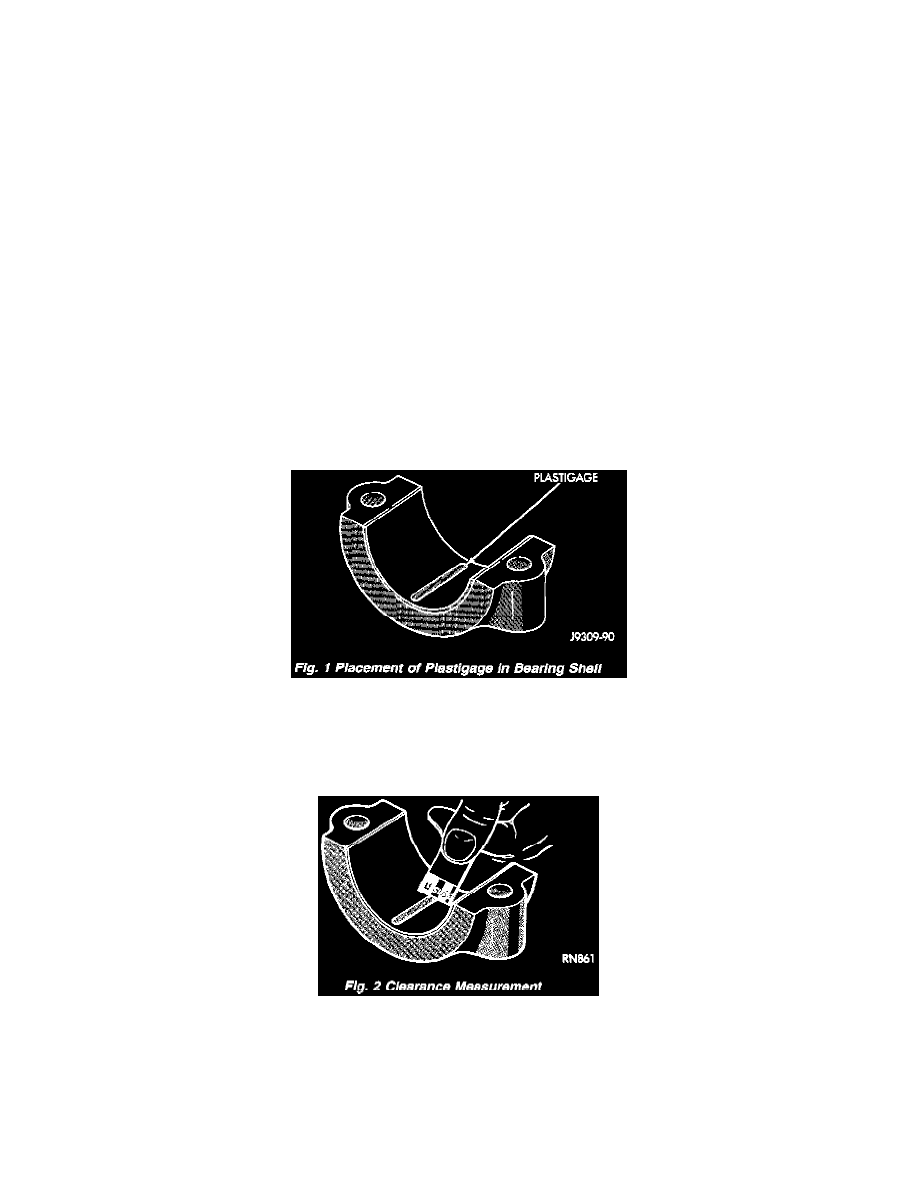Durango 4WD V8-5.9L VIN Z (1998)

Connecting Rod Bearing: Service and Repair
Main Bearing and Connecting Rod Bearing Clearances
MEASURING WITH PLASTIGAGE
Crankshaft Main Bearing Clearance
Engine crankshaft bearing clearances can be determined by use of Plastigage, or equivalent. The following is the recommended procedure for the use
of Plastigage:
1. Remove oil film from surface to be checked. Plastigage is soluble in oil.
2. The total clearance of the main bearings can be determined only by removing the weight of the crankshaft. This can be accomplished by either of
two methods:
Method - 1 (Preferred)
Shim the bearings adjacent to the bearing to be checked. This will remove the clearance between upper bearing shell and the crankshaft. Place a
minimum of 0.254 mm (0.010 inch) shim between the bearing shell and the adjacent bearing cap. Tighten the bolts to 18 Nm (13 ft. lbs.) torque.
-
CHECK NO. 1 BEARING: Shim No. 2 main bearing.
-
CHECK NO. 2 BEARING: Shim No. 1 and No. 3 main bearing.
-
CHECK NO. 3 BEARING: Shim No. 2 and No. 4 main bearing.
-
CHECK NO. 4 BEARING: Shim No. 3 main bearing (3.9L). Shim No. 3 and No. 5 main bearing (5.2L and 5.9L).
-
CHECK NO.5 BEARING: Shim No. 4 main bearing (5.2L and 5.9L).
NOTE: Remove all shims before assembling engine.
Method - 2 (Alternative)
Support the weight of the crankshaft with a jack placed under the counterweight adjacent to the bearing being checked.
Placement Of Plastigage In Bearing Shell
1. Place a piece of Plastigage across the entire width of the bearing cap shell. Position the Plastigage approximately 6.35 mm (1/4 inch) off center
and away from the oil holes. In addition, suspect areas can be checked by placing the Plastigage in that area. Tighten the bearing cap bolts of the
bearing being checked to 115 Nm (85 ft. lbs.) torque. DO NOT rotate the crankshaft or the Plastigage may be smeared, giving inaccurate results.
Clearance Measurement
2. Remove the bearing cap and compare the width of the flattened Plastigage with the scale provided on the package. Plastigage generally comes in
two scales (one scale is in inches and the other is a metric scale). Locate the band closest to the same width. This band shows the amount of
clearance. Differences in readings between the ends indicate the amount of taper present. Record all readings taken. Refer to Engine
Specifications.
3. Plastigage is available in a variety of clearance ranges. The 0.025 - 0.076 mm (0.001 - 0.003 inch) range is usually the most appropriate for
checking engine bearing clearances.
